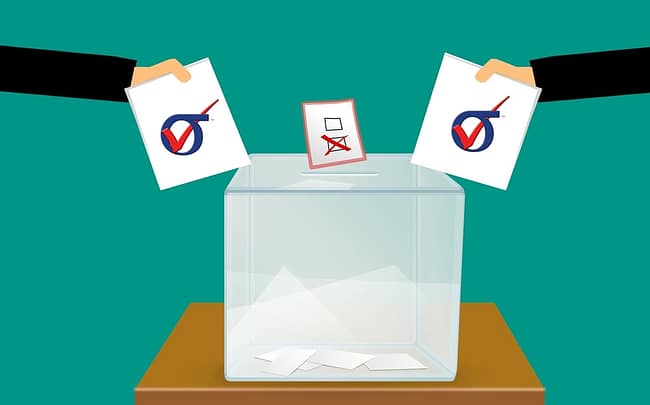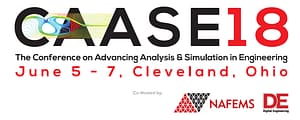In late 2018, ESRD surveyed a representative cross section of our StressCheck user base to learn how the software is currently used to solve engineering applications, and identify potential features which make it more appealing and/or impactful to our users. These survey responses directly influenced the planning and development of StressCheck v10.5, released in June 2019.
With the same purpose in mind for StressCheck v11.0 (expected release in Summer 2020), we rolled out v2.0 of the StressCheck User Experience survey, and the results have been tallied. Many thanks to all of our participants who took the time to complete the survey and share your experiences.
Survey Results Summary
As the survey results were intended to be anonymous, we will summarize & analyze the submissions categorically based on the selected Engineering Roles & Applications and Desired StressCheck Improvements. The submissions by percentage of survey participants are as follows:
Engineering Roles and Applications
- Stress Analysis/Stress Concentrations – 90%
- Fracture/Cracks/DaDT – 70%
- Nonlinear/Cold-working/Residual Stress – 60%
- Fastened Joints/Contact – 57%
- Fatigue/Life – 50%
- Structural/Displacement/Deflection – 40%
- Global-Local/Breakout Modeling – 37%
- Design/Strength – 23%
- Composites/Bonded Joints/Repairs – 20%
Analysis: Similar to the previous survey results, the v2.0 data suggests that most of our survey participants remain focused on detailed analysis of parts & assemblies, including analysis of 3D cracks (e.g. SIF’s), 3D stress concentration factors (e.g. Kt’s), breakout models (e.g. global-local), bolted joints (e.g. multi-body contact) and nonlinear behaviors (e.g. cold-working & residual stresses). As previously noted, these applications are typically challenging in traditional FEA tools, but less challenging in StressCheck due to its focus on high-fidelity FEA applications, hierarchic modeling framework and tools for automatic verification of engineering results.
Desired StressCheck Improvements
- Improved Automeshing Tools – 67%
- Cutting Plane Forces/Moments at Any Cross Section – 60%
- Improved Hand Meshing Tools – 57%
- General Multi-Body Contact Solver Enhancements – 33%
- Post Cold-Work Bolted Joint Analysis – 33%
- Improved GUI Navigation (e.g. Dockable Panes) – 33%
- Large Deformation Contact Analysis – 30%
- Macro Recorder – 27%
- Automatic Detection of Contact Regions – 23%
- Bonded Contact Analysis – 23%
- Multi-Threaded/Cluster Solver – 23%
- 3D Bolt Generator App – 20%
- Enhanced Part Visualization – 17%
- Enhanced Solver Feedback – 17%
- Contact Pressure and Penetration Plots – 17%
- Cyclic Symmetry/Periodic BC’s – 13%
- Tabular/Curve Fit Elastic-Plastic Material Properties – 13%
- Import/Assign Tabular Displacements or Pressures – 7%
Analysis: In response to the previous survey results, in which most respondents (76%) favored improved 3D crack growth simulation support, ESRD reached out to technology partner LexTech, Inc. (developers of AFGROW fatigue crack growth software) and Hill Engineering, LLC (developers of BAMF, an advanced FEA-based 3D crack growth tool incorporating AFGROW and StressCheck) to explore a collaborative effort. Our teams then organized a joint webinar in July 2019 to discuss the latest in 3D crack growth simulation, during which AFGROW, BAMF and ESRD’s CPAT were discussed and/or demonstrated. Then, in early 2020, ESRD and Hill Engineering formalized a marketing partnership to jointly promote StressCheck Professional and BAMF to a wider audience of DaDT professionals. We believe much progress has been made (and continues to be made) on this topic since our previous survey.
The v2.0 data shows that the majority of users (67%) are requesting improved automeshing tools. During the current release cycle, ESRD has dedicated extensive time to improving the behavior of StressCheck’s automesher utility (MeshSim, developed by Simmetrix) and the design & appearance of StressCheck’s GUI. In addition, many of the participants desired improvements to multi-body contact solver options & feedback, cutting plane extractions, and manual meshing tools. We will certainly take these feature requests into consideration for development of StressCheck v11.0 and beyond.
Again, thanks for all of your valued feedback and we look forward to releasing StressCheck v11.0 to you this summer!
Sweepstakes Winner Notification
The $50 Amazon gift card sweepstakes winner will be notified by the e-mail address you provided when you submitted the survey, so be sure to check all your inboxes in the next week!
 Serving the Numerical Simulation community since 1989
Serving the Numerical Simulation community since 1989 










Leave a Reply
We appreciate your feedback!
You must be logged in to post a comment.